Blog

#bioPGH Blog: Eggs, Eggs, Eggs!
 A resource of Biophilia: Pittsburgh, #bi oPGH is a weekly blog and social media series that aims to encourage both children and adults to reconnect with nature and enjoy what each of our distinctive seasons has to offer.
A resource of Biophilia: Pittsburgh, #bi oPGH is a weekly blog and social media series that aims to encourage both children and adults to reconnect with nature and enjoy what each of our distinctive seasons has to offer.
As of Monday, it's official - spring is here! Nothing quite says spring time like little peeps, grunts, and squeaks of new life from the spring baby boom. Many of those little ones are already waiting for spring themselves, or will be soon, from the comfort of their…eggs. Eggs are common across the animal kingdom, but eggs across different groups of animals vary widely! From the gelatinous eggs of a frog to the strong, calcareous shells of a bald eagle, there are many ways that these little embryos stay safe. Let’s explore!
Fish Eggs
Many Pennsylvania fishes fertilize their eggs externally—meaning eggs and sperm are both strategically released into the water. As such, fish egg adaptations include an outer membrane that will allow fertilization yet later protect the little developing embryo. The inside of the egg contains a gelatinous substance to cushion the embryo and the yolk that provides nutrition until the young fish (fry) emerges.
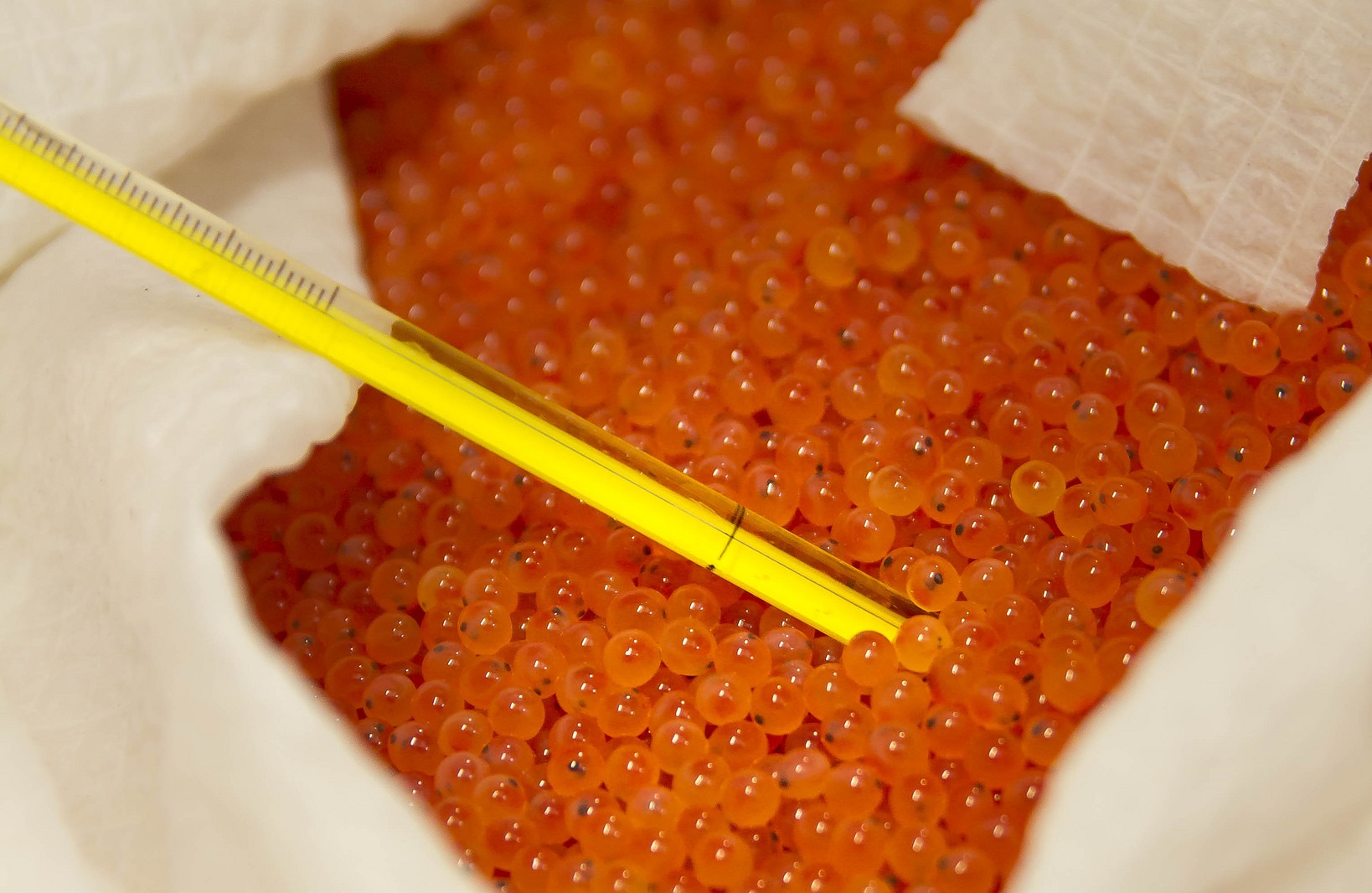
Trout eggs
Even though we don't have Chinook salmon here in Pennsylvania, the video below demonstrates external fertilization in action!
Insect Eggs
Though the variation across insect eggs is astounding, there are some important similarities as well. For example, terrestrial insect eggs are made of several protective layers and membranes, including one membrane called the serosa which creates a tough covering called the cuticle, which is made of a tough material called chitin. These layers within the eggs help protect insect embryos from desiccation (losing water content) before they emerge. Of course, some insects intentionally lay their eggs in water, and their eggs are appropriately adapted for this. Mosquito eggs, for example, need to be in water or they will dry out, and their eggshells have significantly less chitin than a terrestrial insect (the more chitin in the eggshell, the more impermeable the eggs are to water). The chemical structure of insect eggs ranges as widely as their appearances. Honey bees, for example, look like smooth little grains of rice, laid into the wells of the hive’s honeycomb; stick and leaf insects lay eggs that look like plant seeds; mantises create complicated egg cases called oothecae (singular: ootheca, say: o-o-thee-ka); and butterfly eggs look like shiny little pearls.
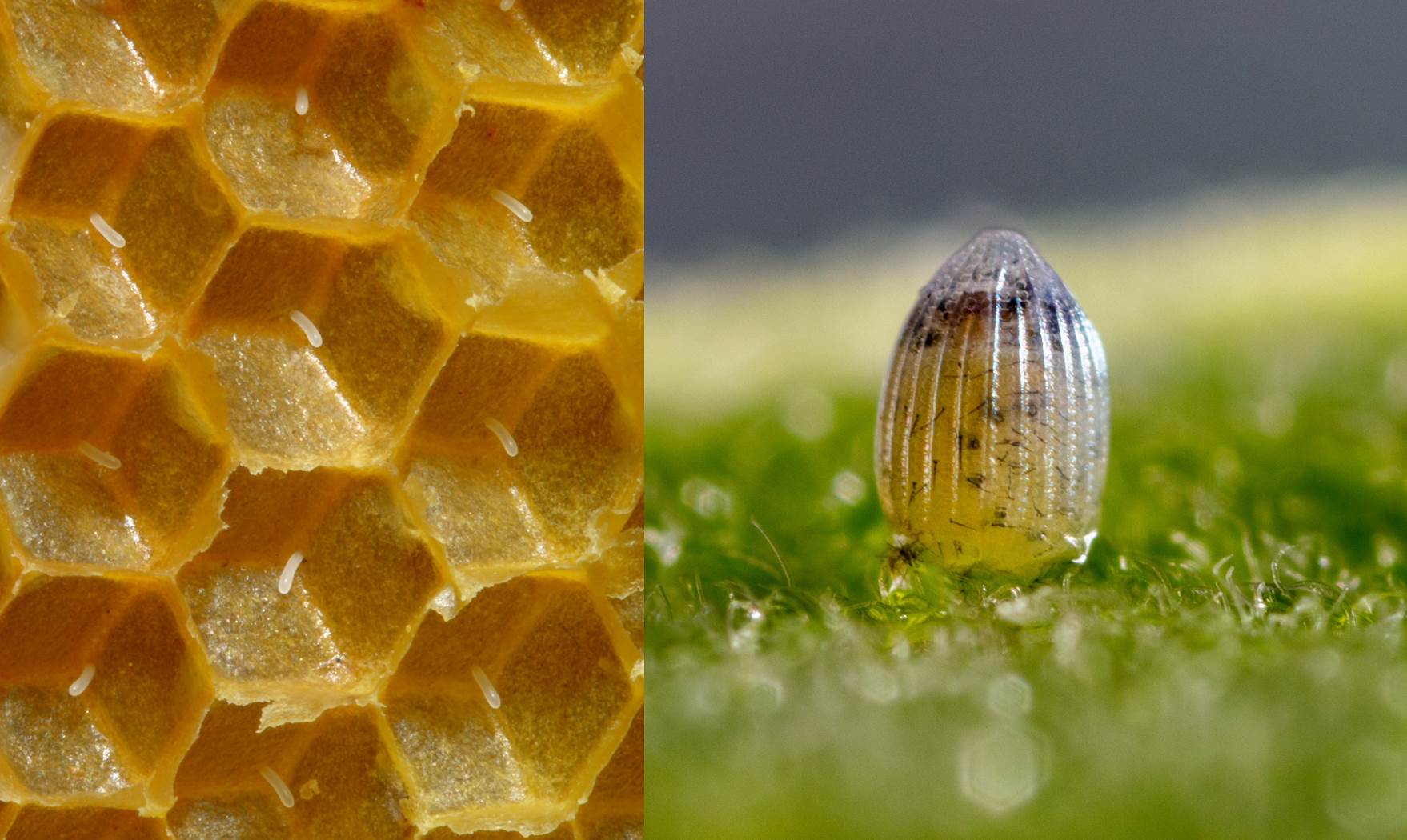
Left, honey bee eggs; right, butterfly egg
We will soon be seeing monarchs again, but check this video below for egg-to-adulthood of a monarch life cycle!
Amphibian Eggs
If you have ever seen a frog egg mass and wondered how a tiny frog could lay a pile of eggs that are larger than the entire body of the female, then you have observed an important part of amphibian egg biology: once laid, the eggs absorb water and gases. Amphibian eggs are typically laid in the water, though a few species lay their eggs underground or in trees; and the eggs are a gelatinous blend of specialized proteins and polysaccharides that give the overall egg resilient elasticity and “stickiness.” The embryos are protected by jelly layers that vary in toughness, depending on whether the species in question lays its eggs on land or in water. It is worth noting that due to the vulnerability of the eggs, amphibians often use seasonal pools (vernal pools) in which to lay their eggs. This protects them from being eaten by fish or other aquatic predators. However, amphibians are sometimes a proverbial canary in the coal mine because of their eggs’ ability to absorb water and any pollutants present in their aquatic nurseries.
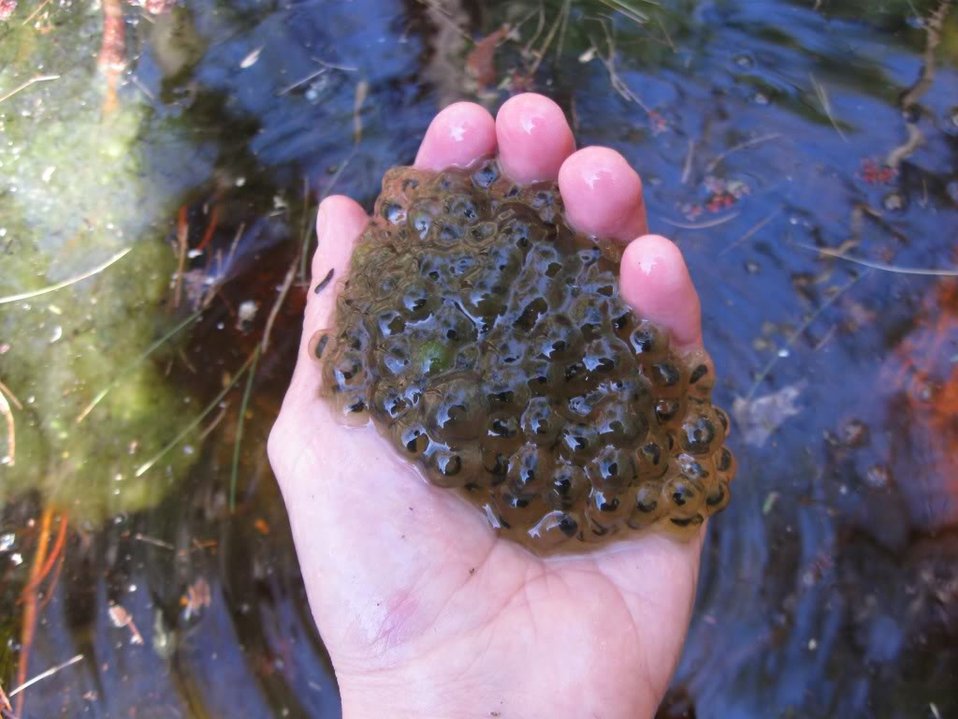
Wood frog eggs
For an upclose look, check out this incredible time-lapse video of salamander development.
Reptile Eggs
The eggs of many snakes, lizards, turtles, etc, look and feel like soft, leathery pouches. A few are more rigid like a bird shell (a sign that they contain calcium carbonate); but a big distinction between reptile eggs and the fish and amphibian eggs we’ve already discussed is the ability to be completely out of water without the concern of drying up. Another major distinction is the presence of an amnion—a membrane that surrounds the embryo. Reptiles—along with birds and mammals—all have an amnion, and the amniotic fluid inside this membrane helps keep the embryo safely suspended in case the egg is jostled. Considering most reptiles do not offer parental care or protect their nests (a few notable exceptions being crocodilians and certain boas), the eggs are the most important form of protection for developing reptiles.
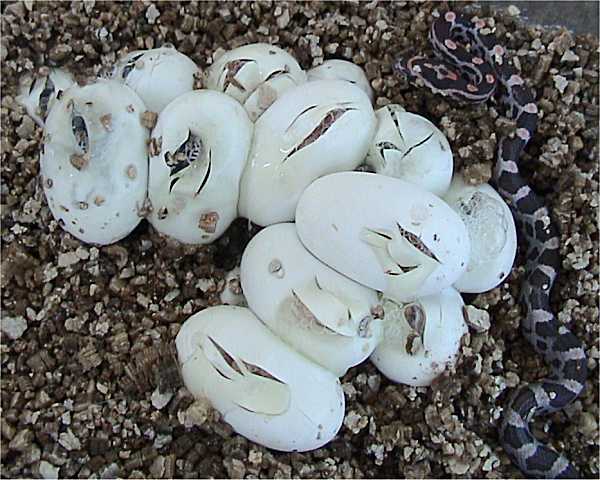
Corn snake eggs
In the video below, you can see an African rock python laying a clutch of eggs!
Birds Eggs
Bird eggs are characterized by a brittle shell made of calcium carbonate and other minerals. Like reptile eggs, bird eggs are safe from desiccation (drying out), and the embryos are protected by the amnion. Unlike the taxa we’ve already discussed, birds have a high level of parental care, starting immediately after the eggs are laid. At least one of the parents will carefully incubate the eggs until hatching, and then care for the nestlings. (Of course, nature always has exceptions, like the cowbird and cuckoo who lay their own eggs in something else’s nest.) Within the bird world, eggs vary tremendously in size, color and shape. Not surprisingly, the largest eggs belong to ostriches and the smallest eggs come from either the bee hummingbird or the vervain hummingbird—both have held Guinness World Record titles for their eggs, which can weigh as little as 0.3 grams (for comparison, a penny is 2.5 grams and an ostrich egg is 1400 grams).
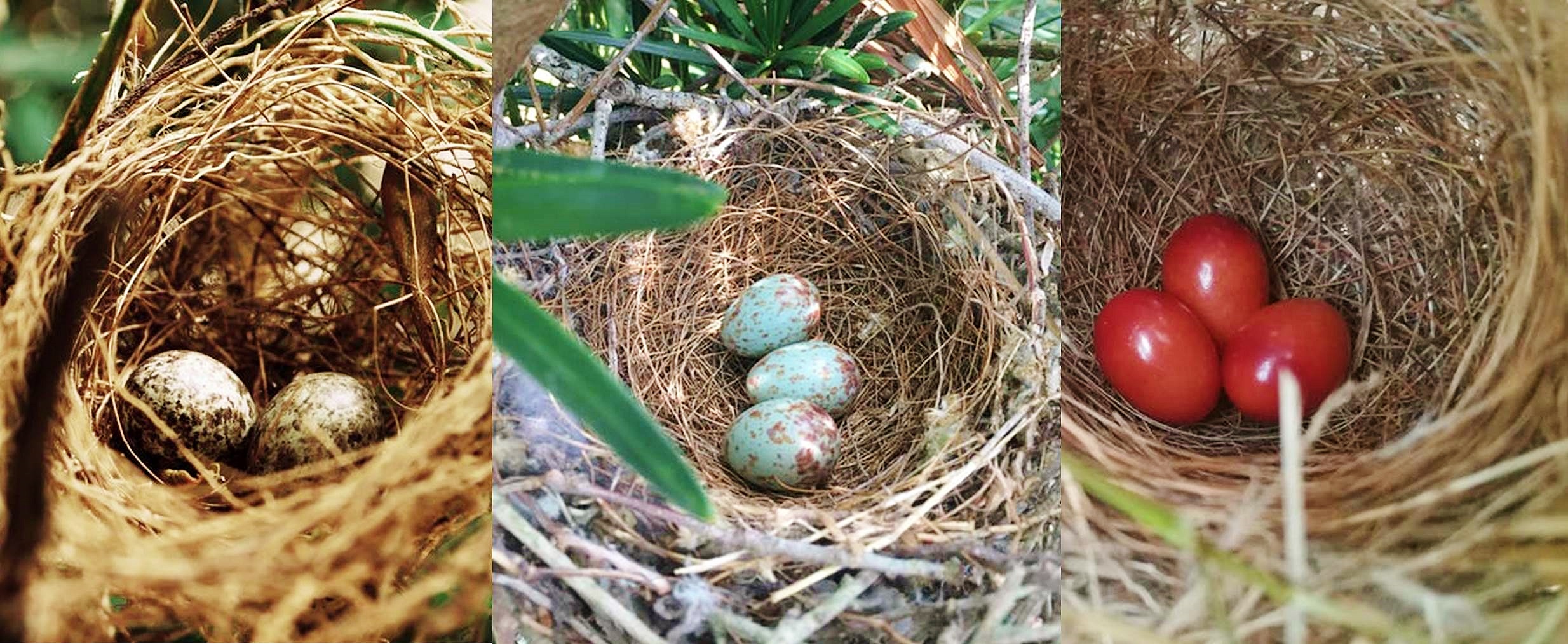
Assorted bird eggs
Remember when we talked about brown-headed cowbirds on the blog? Check out the video below for a sneaky bird egg story!
Mammals
There are a handful of egg-laying mammals out there, like the echidna and platypus, but Pennsylvania isn’t home to any of them. Australia, New Guinea, and Tasmania get those bragging rights.
In Summary
Nature has an amazing variety of ways to accomplish the same task. Even with the same groups of animals, no two egg types are exactly the same. In the end, it just means we will never be out of things to learn about the natural world!
Connecting the Outdoors Tip: If you do spot any egg masses, nests, etc, and you can take a picture without disturbing or harrassing the eggs or the parents, be sure to upload your picture to iNaturalist! However, it's always best to leave wildlife alone.
Continue the Conversation: Share your nature discoveries with our community by posting to Twitter and Instagram with hashtag #bioPGH, and R.S.V.P. to attend our next Biophilia: Pittsburgh meeting.
Resources
Goldberg at al. 2015: Extreme convergence in egg-laying strategy across insect orders
Jacobs et al. 2013: The extraembryonic serosa protects the insect egg against desiccation.
Images: Cover, Wikimedia User Geoff Gallice, CC-BY-2.0; Corn snake eggs, Wikimedia User Dawson, CC-BY-SA-2.5; honeybee eggs, Wikimedia User Waugsberg, CC-BY-SA-3.0; Wood frog eggs, USFWS, public domain; All bird eggs, Pexels, public domain

